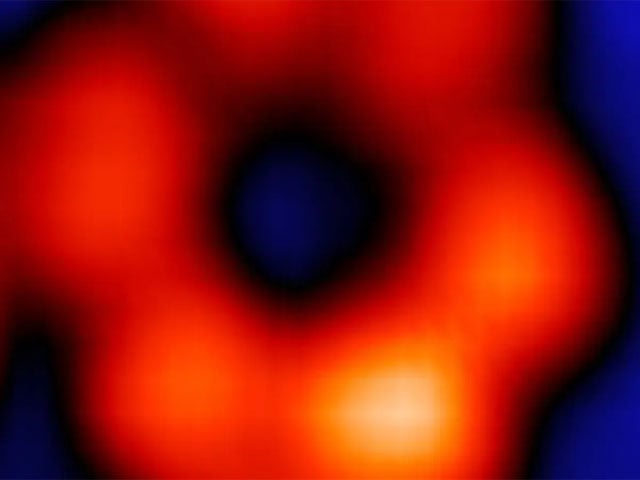Chicago: American scientists have released a stunning image of an individual atom.
In a new study, scientists from the University of Illinois-Chicago and Ohio University’s Argonne National Laboratory have presented a surprising picture of the properties of individual atoms. Scientists captured this image of the essence using X-ray techniques.
Since the discovery of X-rays in the late 19th century, it has been an important object in many fields. The ability of these rays to penetrate matter makes them extremely useful for imaging in medicine, materials research, archeology and astrophysics.
The smallest amount of gem to be x-rayed before was 10,000, compared to the current x-ray of an individual gem, it is a huge achievement that scientists and researchers use to identify the material. I can make a revolution.
The team of scientists took an atom of iron and an atom of the element terbium to X-ray individual atoms.
Conventional X-ray detectors were improved by using a sharp metal tip and combining it with synchronous X-ray scanning tunneling microscopy (SX-STEM). SX-STEM is primarily used to image and classify materials at the nanoscale by identifying X-ray-energized electrons within individual atoms.
The team noticed that the X-ray absorption spectra left unique signatures corresponding to steel and terbium gems.
In addition, the team used X-ray excited resonance tunneling (X-ERT) to classify the chemical state of the gem.
(function(d, s, id){
var js, fjs = d.getElementsByTagName(s)[0];
if (d.getElementById(id)) {return;}
js = d.createElement(s); js.id = id;
js.src = “//connect.facebook.net/en_US/sdk.js#xfbml=1&version=v2.3&appId=770767426360150”;
fjs.parentNode.insertBefore(js, fjs);
}(document, ‘script’, ‘facebook-jssdk’));
(function(d, s, id) {
var js, fjs = d.getElementsByTagName(s)[0];
if (d.getElementById(id)) return;
js = d.createElement(s); js.id = id;
js.src = “//connect.facebook.net/en_GB/sdk.js#xfbml=1&version=v2.7”;
fjs.parentNode.insertBefore(js, fjs);
}(document, ‘script’, ‘facebook-jssdk’));


